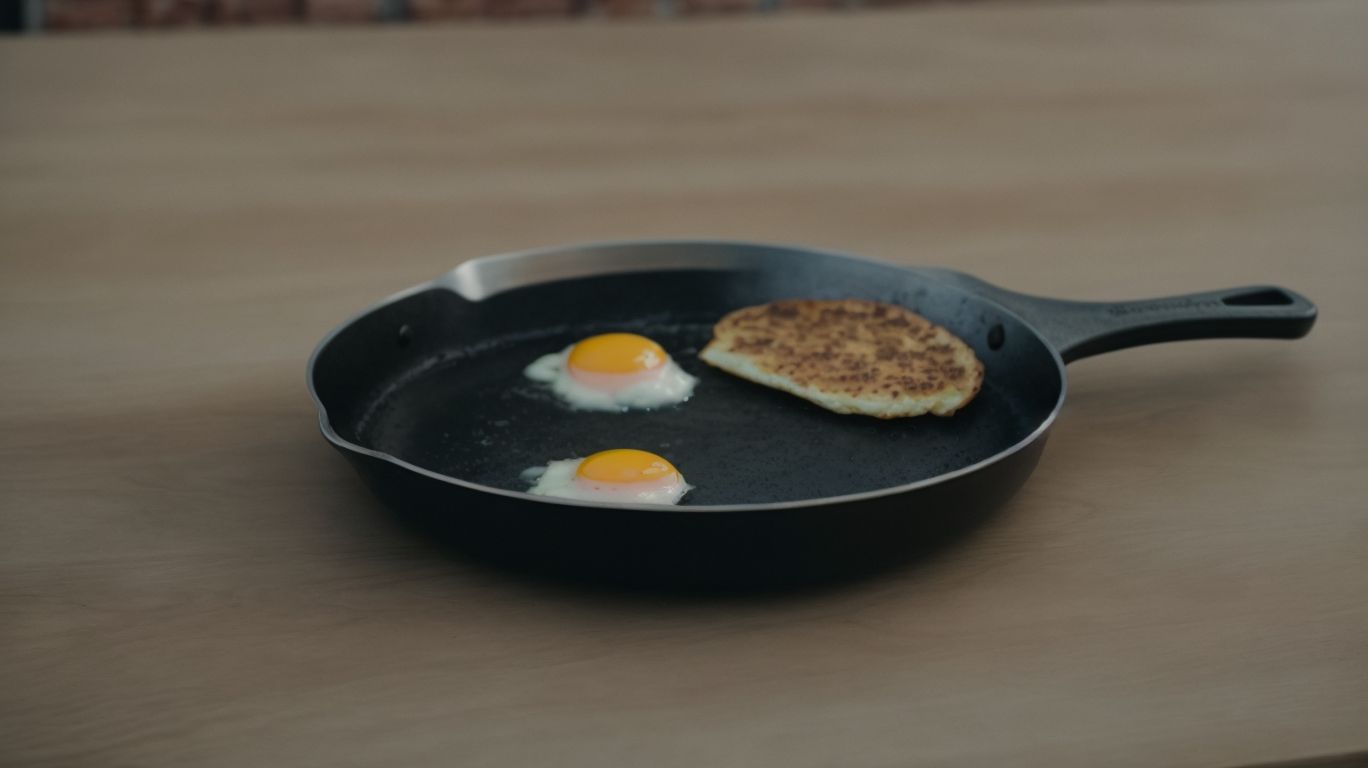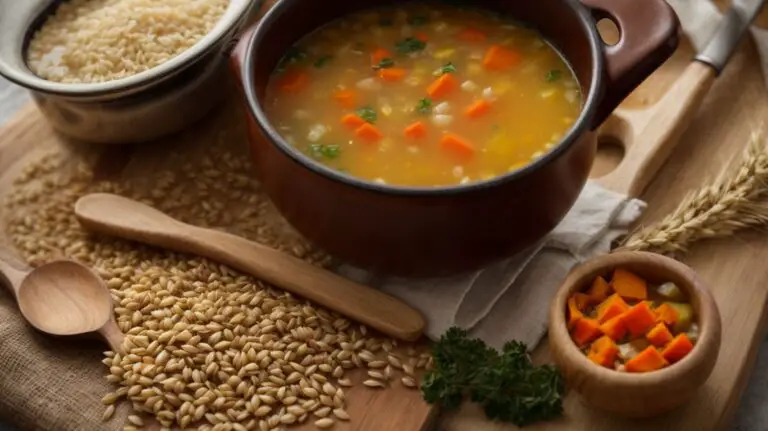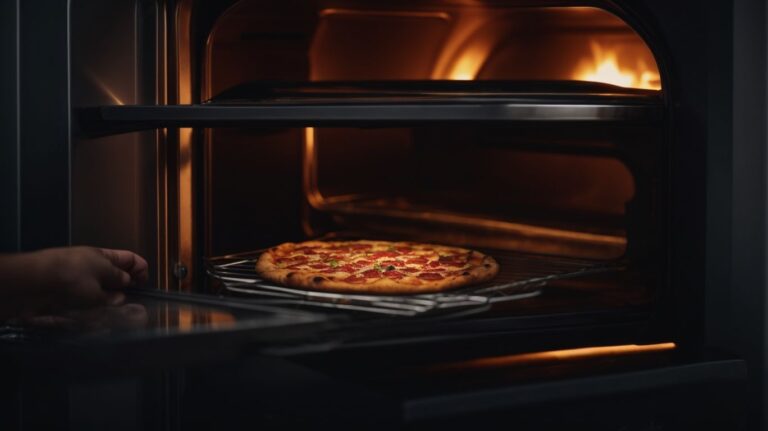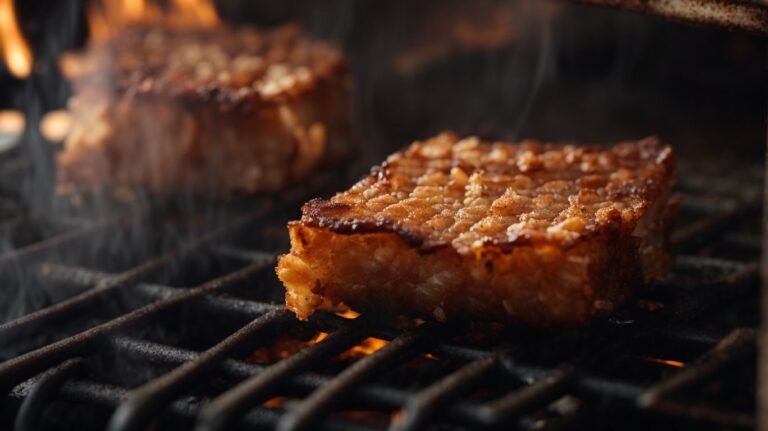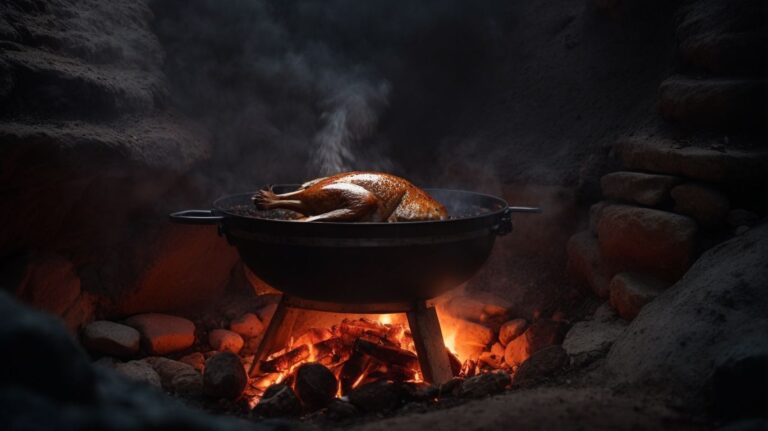How to Cook Over Easy Eggs Without Flipping?
Are you a fan of perfectly cooked eggs with a runny yolk? If so, you definitely need to try making over easy eggs without flipping them.
Find out what over easy eggs are and why you should cook them without flipping. Discover the tools you need, follow a step-by-step guide, learn tips and tricks for perfect eggs, and explore delicious sides to serve with your over easy eggs. Let’s get cracking!
Key Takeaways:
What Are Over Easy Eggs?
Over easy eggs are a popular breakfast dish that involve cooking eggs on one side before gently flipping them to briefly cook the other side, resulting in a runny yolk and set whites.
This method of cooking eggs brings a satisfying blend of textures – the velvety yolk contrasts beautifully with the delicate, fully cooked whites.
The key is to carefully flip the eggs with a spatula just before the yolks are fully set, allowing for a warm, liquid center while ensuring the whites are fully cooked.
The appeal of over easy eggs lies in the indulgent experience of breaking the yolk and watching it gently mix with the whites, creating a rich and creamy combination that delights the taste buds.
Why Should You Cook Over Easy Eggs Without Flipping?
Cooking over easy eggs without flipping offers several advantages, including maintaining the runniness of the yolk, saving time and effort, and preventing breakage and mess during the cooking process.
By not flipping the eggs, you ensure that the yolk remains gloriously runny, perfect for dipping toast or creating a decadent breakfast sandwich. This technique also simplifies the cooking process, as there’s no need to try and master the quick flip maneuver. This approach to eggs helps keep the pan clean with less splattering and helps in avoiding any accidental yolk breakage, guaranteeing a visually appealing dish every time.
Maintains Yolk Runniness
One key reason to cook over easy eggs without flipping is to preserve the yolk’s runny texture, achieved through the gentle steaming process under a glass lid.
When using the steaming method with a glass lid, the transparent nature of the lid allows you to monitor the eggs without lifting it, thereby helping to maintain the desired runny yolk consistency. The control of steam circulation and temperature plays a crucial role in ensuring that the eggs cook evenly and the yolks remain perfectly gooey. This technique not only helps in retaining the moisture within the eggs but also prevents overcooking, resulting in a delightful runny yolk that oozes out deliciously when pierced.
Saves Time and Effort
Opting to cook over easy eggs without flipping not only simplifies the cooking process but also reduces the time and effort needed for a perfect breakfast.
When cooking over easy, you crack the egg into a pan with hot oil or butter, let the whites partially set, but keep the yolk runny. This method ensures a cooked white with a velvety, rich yolk. Cooking over easy is a versatile technique that works well for various dishes like breakfast sandwiches, salads, or as a topping for burgers. By mastering this approach, you can elevate your breakfast game without added complexity. The simplicity of cooking over easy adds a touch of finesse to your culinary skills.
Prevents Breakage and Mess
By avoiding the flipping step, over easy eggs stay intact, minimizing the risk of yolk breakage and reducing kitchen mess, especially when using a clear lid for visual monitoring.
When the eggs are left to cook undisturbed without flipping, the whites set neatly around the yolk, creating a delicious contrast between the runny yolk and the firm egg whites. This technique is not only about preserving the yolk but also ensuring a visually appealing dish.
The clear lid allows you to keep an eye on the eggs without disrupting the cooking process. This way, you can achieve perfectly cooked eggs with runny yolks every time, adding a touch of sophistication to your breakfast or brunch.
What Tools Do You Need for Cooking Over Easy Eggs?
To cook over easy eggs successfully, you’ll need a non-stick pan and butter for a flavorful and easy release cooking experience.
When preparing over easy eggs, the non-stick pan is crucial as it ensures that the eggs don’t stick to the surface, making the flipping process effortless. A good quality pan distributes heat evenly, preventing uneven cooking.
Using butter adds a rich, savory flavor to the eggs and helps achieve that perfect golden-brown crust on the edges. It also aids in preventing the eggs from sticking to the pan and adds a nice buttery aroma to the overall dish.
Step-by-Step Guide for Cooking Over Easy Eggs Without Flipping
Mastering the art of cooking over easy eggs without flipping entails precise steps involving heating the pan, adding water, covering with a lid, and achieving the perfect texture.
To start, heat the pan over medium heat, then add a small amount of water to the pan, as the steam will help cook the eggs from the top down.
Next, carefully crack the eggs into the pan, making sure not to break the yolks. Cover the pan with a lid to trap the steam, allowing the eggs to cook gently. It’s crucial to monitor the heat to avoid overcooking the eggs.
Step 1: Heat the Pan and Add Butter
The initial step in cooking over easy eggs is to heat the pan and add a dollop of butter, ensuring a flavorful base for the eggs to cook in.
Heating the pan is essential as it helps in achieving the perfect level of heat for the eggs. The sizzle of the butter as it melts signals that the pan is ready. This step not only prevents the eggs from sticking but also imparts a rich, buttery flavor to them.
Butter, with its creamy texture and savory taste, plays a crucial role in enhancing the overall flavor profile of the dish. Its natural fats help create a non-stick surface in the pan, making it easier to slide the eggs out once cooked.
Step 2: Crack the Eggs into the Pan
Once the pan is ready, crack the eggs carefully into the pan, ensuring a gentle method to avoid shell breakage and maintain the egg’s integrity.
When cracking the eggs, it is crucial to hold them slightly above the pan to control the release and prevent sudden impacts that could lead to shell shards in the food.
Using a smooth, firm motion, swiftly crack the egg on the edge of the pan, allowing the egg to gently fall into the heated surface without disrupting the yolk.
This finesse ensures a pristine appearance and even cooking, optimizing the overall taste and texture of the over easy eggs.
Step 3: Add Water to the Pan
Adding a splash of water to the pan creates steam that helps cook the eggs gently and evenly, enhancing the overall texture and preventing sticking.
When the water hits the hot pan, it swiftly turns into steam, encapsulating the eggs in a cloud of gentle heat. This moisture-rich environment ensures that the eggs cook slowly, preserving their tenderness. The lid can be placed on the pan to trap the steam, further aiding in the cooking process. The steam also plays a crucial role in preventing the eggs from becoming rubbery or dry, resulting in a perfectly cooked over easy egg with a velvety texture.
Step 4: Cover the Pan and Cook the Eggs
Covering the pan with a lid allows the eggs to cook through a combination of steam and heat, employing a gentle technique that yields perfectly cooked over easy eggs.
The process of covering the pan during cooking creates a controlled environment within, ensuring that the eggs are not only cooked but steamed as well, enhancing their texture and flavor. When the lid is placed on the pan, it traps the heat, circulating it evenly around the eggs, promoting even cooking.
The steam generated from the eggs’ moisture under the lid helps in gently cooking the top of the eggs without the need for flipping. This method not only speeds up the cooking process but also prevents the eggs from turning rubbery or overcooked.
Step 5: Remove the Eggs from the Pan
Once the eggs are cooked to your liking, gently remove them from the pan with a spatula, practicing the art of achieving the perfect over easy texture through skillful handling.
Remember, the key to successful over easy eggs lies in the delicate balance of ensuring the yolk remains runny while the whites are fully set. As you slide the spatula underneath the eggs, be cautious not to break the yolk, as it’s the hallmark of this dish. Take your time to develop a smooth motion that allows you to flip the eggs without splashing or jostling them too much.
Cooking over easy eggs is as much about finesse as it is about exact timing. The practice of flipping them just right takes patience and experience. Your commitment to this iterative process will eventually lead to consistently delicious results.
Tips and Tricks for Perfect Over Easy Eggs
To elevate your over easy eggs, consider achieving crunchy edges for textural contrast while ensuring the yolk remains delightfully runny for a satisfying breakfast experience.
One expert trick to achieve those desired crunchy edges is to use a well-seasoned cast-iron skillet. Heat it over medium-high heat and add butter or oil for a rich flavor. Crack the egg gently into the skillet and let it cook until the edges turn crispy, but the yolk stays runny, which typically takes about 2-3 minutes. To prevent the yolk from overcooking, you can cover the skillet with a lid briefly towards the end of cooking, ensuring a perfect balance of textures in your over easy eggs.
What to Serve with Over Easy Eggs?
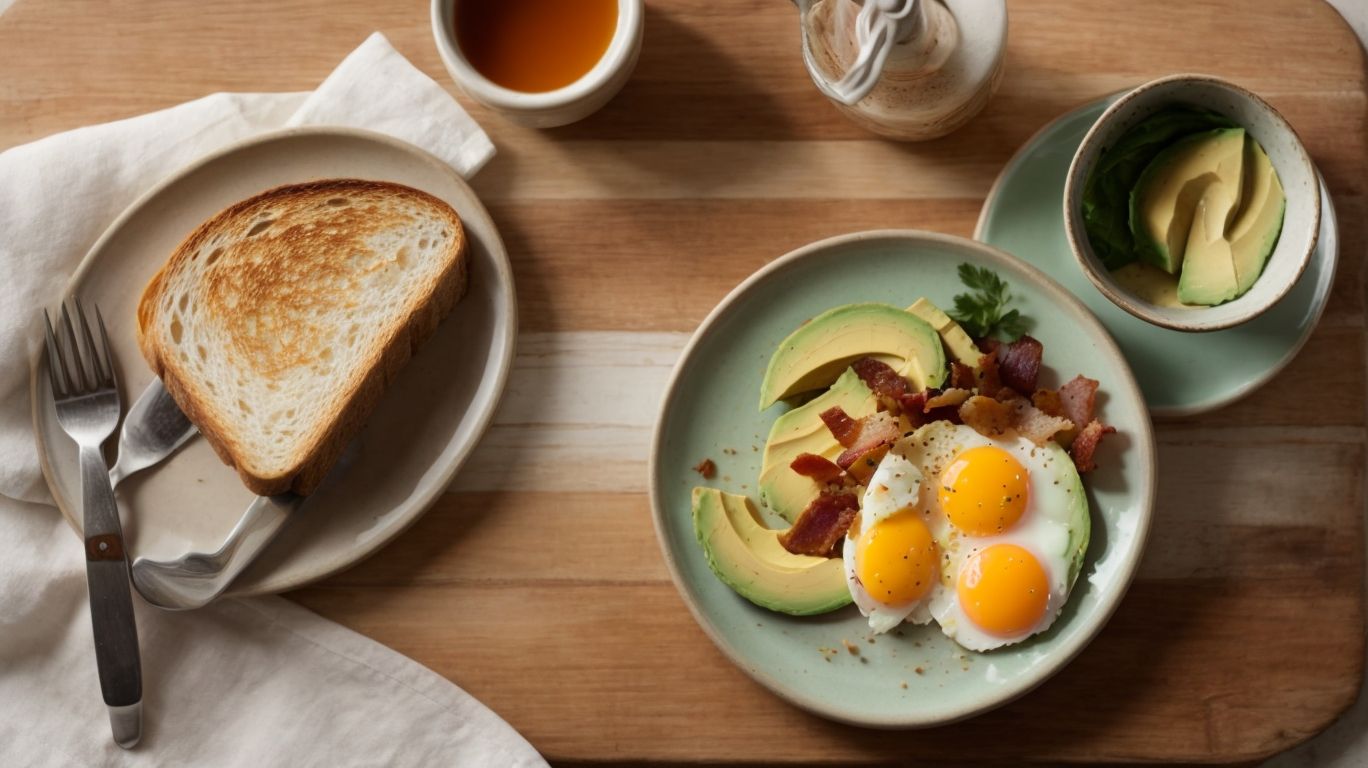
Credits: Poormet.Com – Kevin Adams
Over easy eggs pair exceptionally well with sides like toast or English muffins, along with savory options such as bacon or sausage for a complete and satisfying meal.
For a touch of freshness and added nutrients, consider serving the over easy eggs with a side of avocado slices or a light spinach salad. The creamy texture of avocado complements the runny yolk of the eggs, while the spinach provides a burst of vibrant colors and essential vitamins.
If you prefer a more indulgent option, crispy hash browns or golden-brown potato latkes make excellent accompaniments, adding a satisfying crunch to each bite alongside the soft texture of the eggs.
A side of fresh fruit like sliced strawberries or a medley of berries can offer a sweet contrast to the savory elements on the plate, creating a well-balanced flavor profile.
Toast or English Muffins
Serving over easy eggs with toasted bread or English muffins offers a delightful combination of textures and flavors, making it a classic breakfast choice for many.
The appeal of this dish lies in the contrast between the perfectly cooked, runny yolks of the eggs and the crispiness of the toast or the softness of English muffins. The richness of the eggs complements the simplicity of the toast, creating a satisfying balance of flavors on the palate. A side of crispy bacon, fresh avocado slices, or a sprinkle of fragrant herbs can further enhance the overall experience, providing additional textures and tastes to the meal.
Bacon or Sausage
For those who enjoy a heartier breakfast, serving over easy eggs with crispy bacon or savory sausage provides a satisfying and flavorful meal tailored to individual preferences.
Whether you prefer the smoky and crispy texture of bacon or the robust and savory taste of sausage, both options complement the creamy yolk of over easy eggs perfectly. The beauty of breakfast lies in its customized nature, allowing you to create a dish that caters precisely to your taste buds.
Imagine the rich flavors harmonizing as you cut into the eggs, letting the velvety yolk ooze out, mingling with the salty essence of bacon or the spiced notes of sausage.
Avocado or Tomatoes
Adding sliced avocado or fresh tomatoes to your plate of over easy eggs introduces a touch of freshness and color, elevating the dish with vibrant flavors and textures.
Avocado, with its creamy texture and rich flavor, contrasts beautifully with the runny yolks of the over easy eggs, creating a delightful combination that is as visually pleasing as it is delicious. The freshness of the tomatoes adds a burst of acidity and juiciness, providing a refreshing balance to the richness of the eggs. These vibrant additions not only enhance the taste of the dish but also add a pop of color that resembles the bright hues of a summer sky adorned with fluffy clouds.

